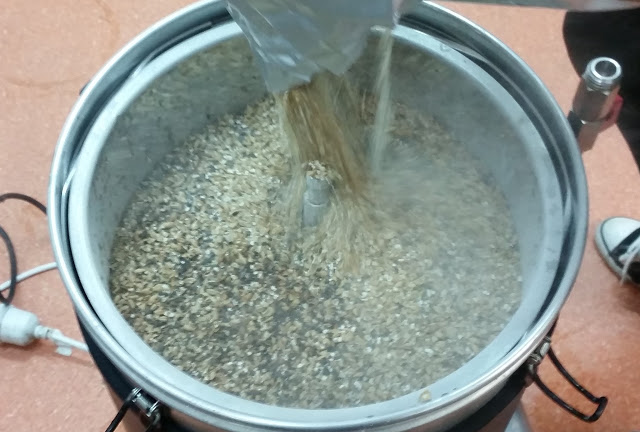This week Dave in the UK office takes a look into brewing beers with larger grain bills (above 6kg) and the reasons why you might want to do this as well as tips to help with brewing when it comes to larger grain bills.
Large grain bill brewing has one very obvious advantage, and that is higher ABV beers. As a very general rule of thumb, 1kg of grain will make a 1% ABV beer (this is extremely general!) so once you start going above 6kg you are looking at beers above 6% which, for brewers trying to replicate some of the better craft beers is going to be a fairly standard start point for ABV.
As with most brewing techniques there are some things to consider when you start looking at higher grain bills for your beers. For example, a ‘larger’ grain bill is not necessarily just about adding a few more kilograms of base malt. Although this will increase your ABV it will also have a large impact on your finished beer, changing the desired colour, the malt character and the the end taste of your beer. If you regularly brew a dark beer and you decide you want to make it bigger, then adding more base malt will most likely make it lighter in colour and result in you losing a lot of the roasted or caramel flavour you normally get from your dark or crystal malts.
Similarly, just scaling everything up the same amount by weight across the board is unlikely to result in anything good. You’ll find that with many darker malts there are recommendations for certain percentages that you should use (eg try to avoid using more than 25% none diastatic malts when brewing a stout). If you simply increase your malts across the board you may find that you are suddenly using too much dark malt and you will start to get really acrid, burnt flavours in your beer that may not have been present in the smaller version.
Your best bet is to work with your grain bill as percentages. Let’s stick with a stout recipe – if we have a recipe which calls for;
4.1kg Maris Otter (64.4%)
0.65kg Munich (10.2%)
0.59kg Brown (9.3%)
0.3kg Roasted Barley (4.7%)
0.23kg Dark Crystal (3.6%)
0.2kg Chocolate (3.1%)
0.2kg Amber (3.1%)
0.1kg Black Malt (1.6%)
and lets say just as an example we wanted to scale this up from a 6.37kg recipe to a 7.5kg recipe we should increase the malts but keep the percentages the same;
4.86kg Maris Otter (64.4%)
0.77kg Munich (10.2%)
0.70kg Brown (9.3%)
0.36kg Roasted Barley (4.7%)
0.27kg Dark Crystal (3.6%)
0.235kg Chocolate (3.1%)
0.235kg Amber (3.1%)
0.12 Black Malt (1.6%)
This should give you a beer closer to 7.3% but with a similar malt character to the same, smaller beer that was working out at 6.2%. You must take into consideration though that as your gravity increases your hop utilisation decreases so you can’t simply use the same amount of hops as you would have in the 6.2% beer. If you want your higher ABV beer to balance as well as your lower ABV then look at increasing the amount of hops until the BU:GU ratio is the same.
Another important aspect to consider is that your brewhouse efficiency will be negatively affected when you are using more grains. Compared to mash efficiency, brewhouse efficiency takes into account additional losses after the mash which may include kettle dead space and evaporation rate in the boil and losses to trub and transfer (all of which lower your efficiency). The reason larger grain bills have a negative effect on the brewhouse efficiency is because they negatively effect the mash efficiency due to the fact you are using a greater amount of grains to water (which will result in more water absorption in the mash and less sugar extracted so you should lower your assumed efficiency).”
